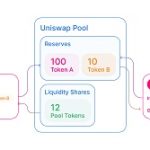
- Shelley introduces in Cardano a new consensus algorithm based on Proof of Participation (PoS).
- ADA token owners will be able to earn rewards for block production.
Decentralization has come to Cardano from Shelley, one of its most anticipated forks of 2020.
After almost a month of delay, the community finally witnessed yesterday the launch of this latest update. It allowed the Cardano blockchain to leave behind its centralized network scheme, known as Byron, to begin charting a new, more decentralized path with Shelley.
Under Byron’s scheme, Cardano’s transaction blocks were produced and transmitted by just three founding entities: Cardano Foundation, Emurgo and IOHK; which centralized its operation. Now, after this bifurcation, a new consensus algorithm has been introduced that will allow the blockchain to be run by the community.
Ouroboruos is the name of the Proof of Participation (PoS) protocol proposed by Shelley, which allows Cardano users to participate in the confirmation and propagation of transactions. The highlight of this change is that any user can become a Cardano delegate if they wish.
Receiving rewards for working for Cardano
The new community scheme will allow “stake pools” to be formed in Cardano, who will specialize in the production and transmission of blocks. This entity is a blockchain node with a public address, which can be used by other owners of ADA (the Cardano token) to delegate their power of participation when confirming transactions.
Any user can participate as a node or pool if they have 4GB of memory (RAM) hardware, with operating systems such as Windows, Linux, Mac and BSD. You also need a 1GB bandwidth per hour network connection, a public IP4 address, and the deposit of some ADA tokens at that address.
Each of these nodes must register with the main chain, an activity that will provide them with a certificate to operate on the blockchain. Once these requirements are met, they will be able to start confirming transactions and receiving rewards for their work immediately.
The formation of a minimum of 1,000 pools is expected to maintain the balance of the consensus, according to IOHK statements. This number will not be so difficult to obtain, if we take into account that in the first eight hours after the launch of Shelley, 267 pools had already been active, according to blockchain records.
In addition to these advancements, it is also known that in the PoS engagement process, users can receive rewards without directly engaging in transaction confirmation. A person who owns ADA can delegate their tokens to one of the pools being promoted, and thus obtain payments for their coins lent to the pool. The developer team will be teaching classes on how to participate in this delegation process with the Cardano tokens, guidelines that they will publish on the Stake Pool School platform.
Preparing for new challenges
Charles Hoskinson, CEO of IOHK, says that Shelley will increase Cardano’s security and “robustness”. Likewise, it is expected that the new update will allow expanding the use cases of the blockchain and that by the end of the year “hundreds of assets” will be executed in its network.
The developer team is also preparing to launch a governance model called Project Catalyst, which could be ready by the end of 2020. This governance tool will allow the Cardano community to make decisions regarding the network, voting for software updates or technical improvements.
Shelley is one of the most important bifurcations of the Cardano roadmap, being expected from the month of February when the first steps were taken for its preparation. Although it was originally said that the fork would be ready by June, the team was barely able to launch this week.
If they want to invest in ADA, Cardano’s cryptocurrency, you can buy this asset on the Binance exchange.






